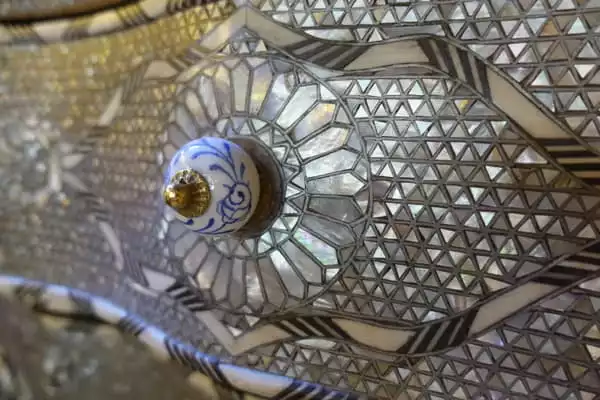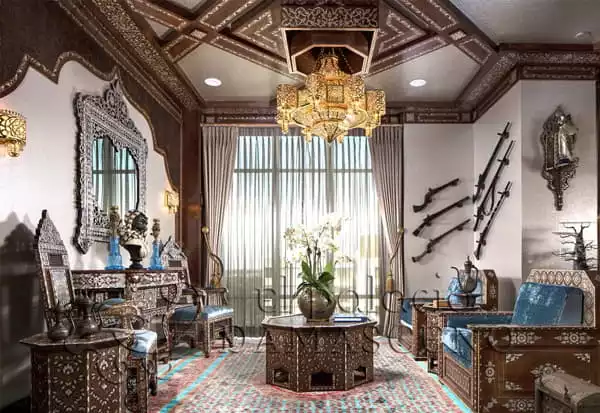The history of Mother-of-pearl inlay
Mussels, oysters, and other freshwater and saltwater shellfish have mother-of-pearl linings in their shells. Known alternatively as mother-of-pearl marquetry, this technique uses on wood to create a variety of ornamental objects.
The history Mother-of-pearl

Syrian marquetry, commonly referred to as mother-of-pearl inlaid furniture, has a long history in Damascus, the world’s oldest continuously inhabited capital, and it has a unique aesthetic. Marquetry is a traditional Syrian craft that was developed in Damascus and is still practiced there today. Mother of pearl, wood, or bones are the three most common materials used as inlays. Mother of pearl is most frequently used as an inlay. This handicraft has a history dating back up to 2000 years, and the craft’s knowledge has been passed down through the generations and is valued highly. According to history, this legacy migrated from Damascus to nations like Turkey and Spain. Any piece of furniture or work of art, including kitchen or living room furniture, items hanging on walls, tables, or even a small ring box, may be decorated with mother-of-pearl.

It was one of the handicrafts that was widely used to embellish the doors and windows of mosques, palaces, and houses starting in the 15th century.
Which nations used mother-of-pearl?
Viennese
In this Austrian method, mother-of-pearl compositions are placed on black furniture and separated by metals like brass, copper, and lead. It is broken randomly and glued between the brass wires that encircle the metal plates.
Far Eastern
This is the collective term for the marquetry produced in nations like India, China, Japan, and Vietnam; it typically features colorful mother-of-pearl and beautiful patterns on a black backdrop.
Damascus
A wood frame is covered with a previously designed pattern. The mother-of-pearl is hammered inside once the wires have been bonded along the lines.
interior architects of Syria
Our expert and enthusiastic craftsmen meticulously create each piece of Syrian furniture. Our Syrian furniture is unique because we carefully coordinate the work of several craftsmen, use the best materials, like inlaid Syrian mother-of-pearl, and employ age-old techniques like intarsia to produce three-dimensional effects.
Syrian homes are decorated with Mother-of-pear

These priceless pieces of Syrian furniture with inlaid decoration have always been linked to affluent, noble Arab society and a luxurious way of life. Such rare marquetry and antique artifacts might be found in many palaces, courtyards, and museums. This mother-of-pearl furniture was primarily created for the caliphate or monarch. At first, the best equipment for producing such a precise handmade was lacking. Stone was used to grind the mother-of-pearl, and an ax was used to form the wood into the proper shape. Typically, a marquetry object was offered as dowry. For instance, it used to take a year to make a cabinet. A piece of furniture with inlay art can now be made more quickly, but many trained and experienced craftsmen are still needed to complete these wonderful pieces of walnut wood.
Moorish Spain are where the art of inlaying first made its way to Europe. Intarsia, thought to have been derived from the Arabic tarsi’ , is the term given to the method. some people trace the word back to the Latin interserere . However, the term marquetry, which refers to a mosaic of veneers and is another word for wood inlaying, originates from the French marquetor .
Many of these appealing wooden handmade objects are one-of-a-kind works of art made by artisans, who typically have exceptional technical and artistic talent.
This ancient art, which is mixed with the history of Syria, has memories for all Syrians. They try to preserve it by teaching the craft to their grandchildren and spreading it around the world.



